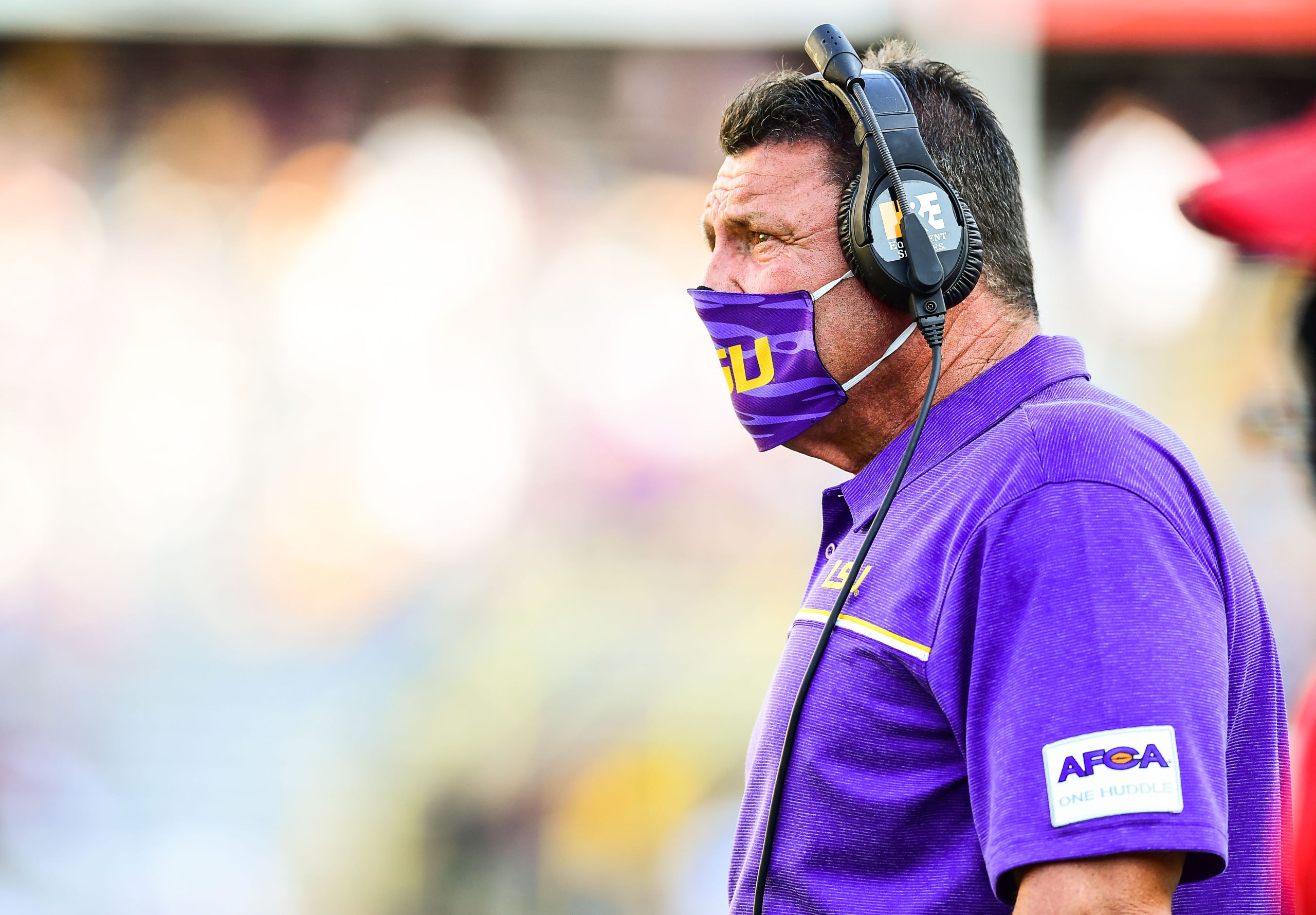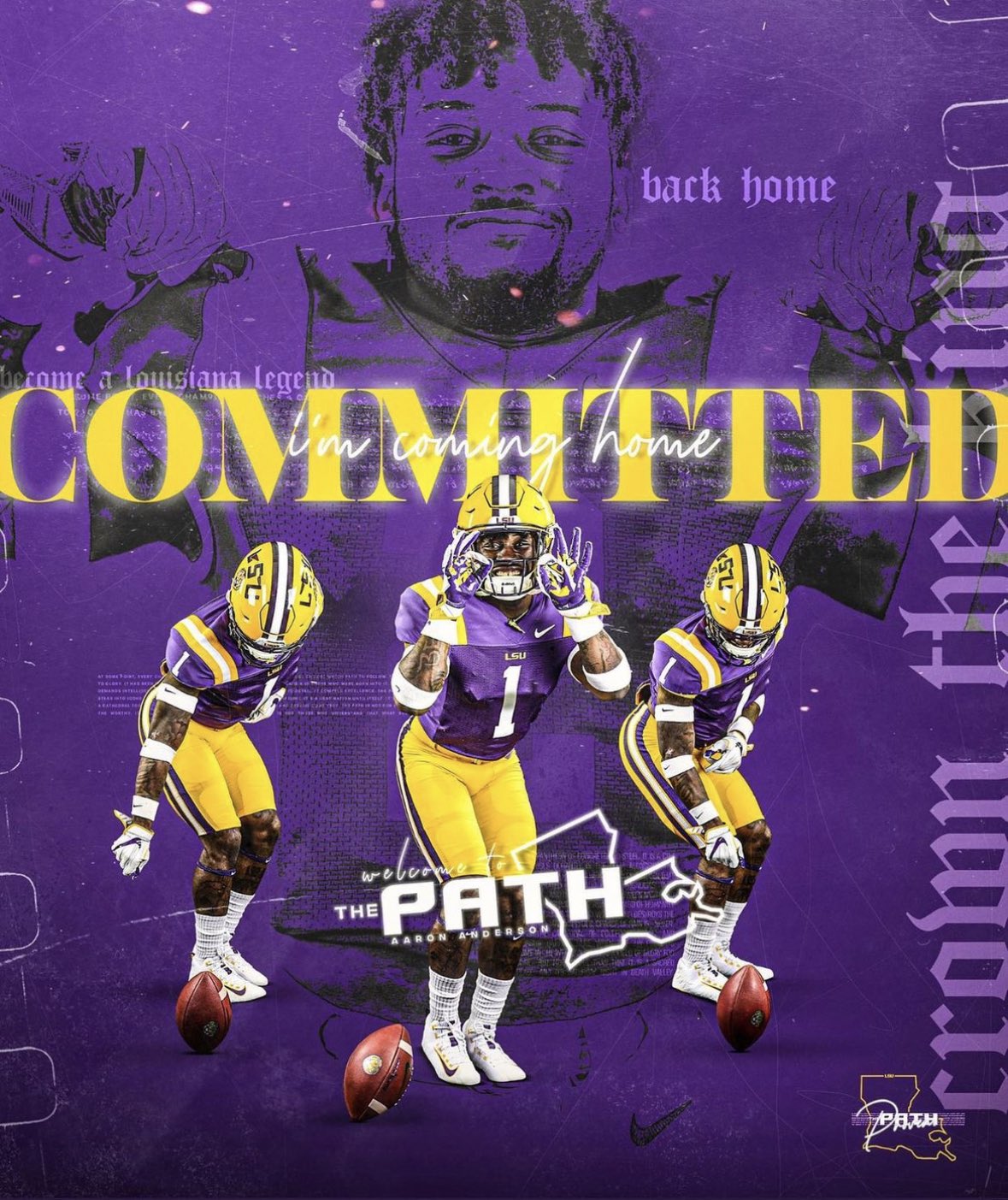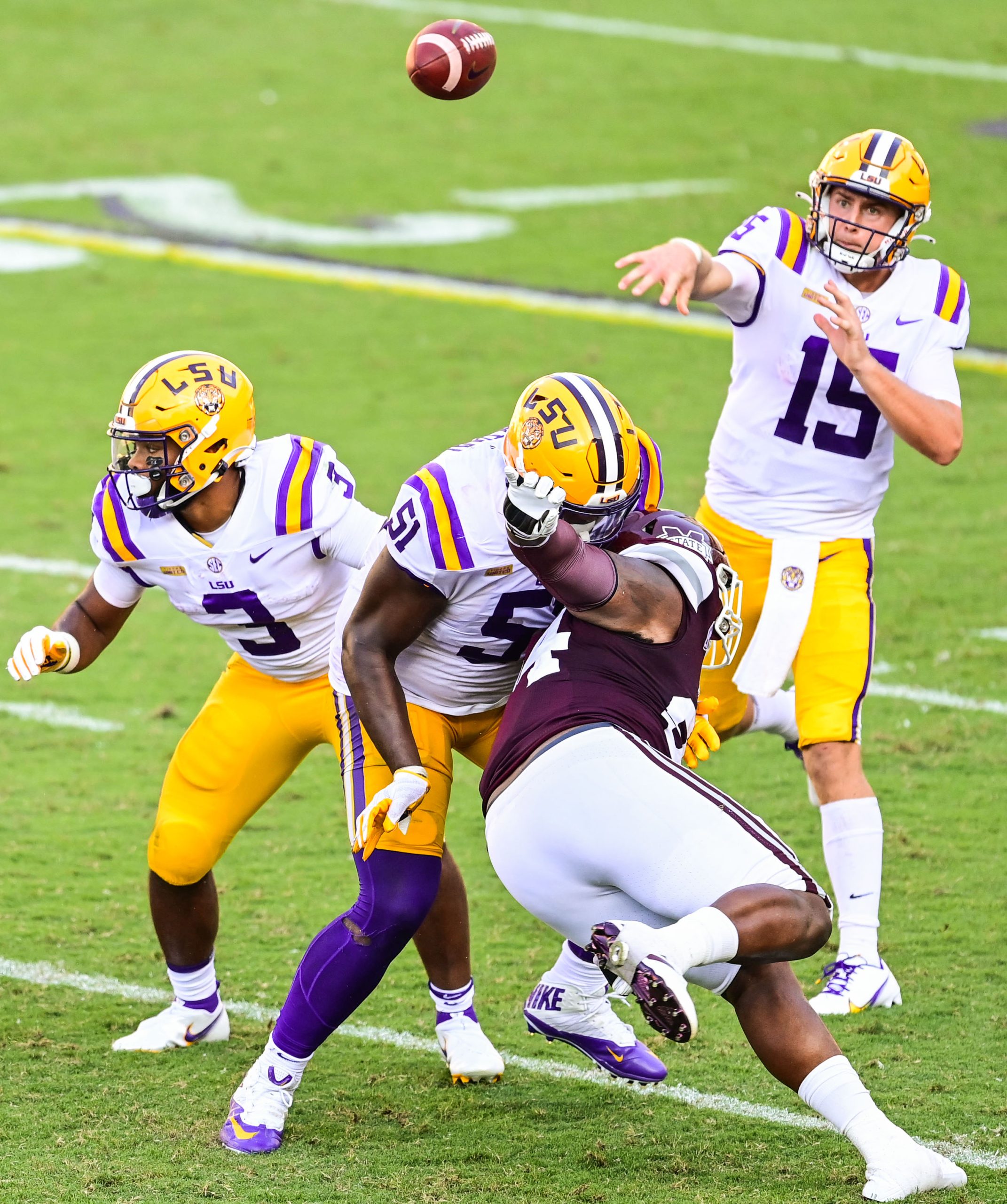
When Les Miles dipped from a 12-win national title team in 2007 to a paltry eight wins in 2008, many critics found the decline deplorable for a program that was annually among the top five college powers in recruiting.
Ed Orgeron has found the pinnacle is precarious in a brief nine and one half months in climbing from obscurity to the mountaintop. From Jan. 13 to Oct. 31, Coach O has devolved from a storybook fable of an unappreciated genius to a subject of fury among the LSU fan base. Going from a 17-point win over an undefeated opponent defending its national title to a 37-point loser to a mediocre opponent in a span of five games is alarming to a perplexed Tiger Nation.
When his team blasted Clemson out of the Superdome in January, Orgeron and crew thumped their chests about who were the “Real Tigers.” Five games into this season, LSU has been embarrassed by Tigers from Missouri and Auburn. It appears LSU only matches up well against Tigers when the games are in Louisiana.
Thank goodness LSU is hosting Alabama on Nov. 14 instead of traveling east to face Clemson or west to meet the Occidental Tigers. Missouri and Auburn are not good football teams, but both offenses appeared to be unstoppable juggernauts against a porous LSU defensive unit populated by a bevy of high quality recruits. If Bob Brodhead were LSU athletic director, his football coach would be on a game to game evaluation after the 48-11 thrashing on the Plains. Coach O is looking more like the flummoxed fellow forced out at Oxford than the superior strategist who directed his troops to the best season in college football history.
LSU coaches were once given multiple losing seasons before the axe fell. Charlie McClendon was the notable exception with one losing campaign in 18 years while Jerry Stovall and Mike Archer had two in four seasons, Curley Hallman had four in a row and Gerry DiNardo had two losing years after three winning seasons.
Orgeron has won more than 77 percent of his games at LSU with a national title, but Les Miles had the same resume’ and was sentenced to Lawrence, Kansas for his final coaching destination.
Gone are the days when the program could withstand eight losing seasons in 11 years and be solvent. The LSU athletic ship is dependent on the Tiger football team to win and win big to pay the freight for all other sports and for substantial compensation earmarked for coaches and administrators.
LSU will be an underdog in at least three of the remaining five games (Alabama, Texas A&M and Florida). With a current 2-3 record, a 4-6 record appears to be the most likely finish with dates vs. Ole Miss and at Arkansas providing no forecast of certain victories.
The worst case scenario is a 2-8 close, which would mark the most calamitous one-year collapse the college game has witnessed and force the hand of Athletic Director Scott Woodward. The flagship sport at LSU stands to lose a projected $80 million in COVID-19 related costs, and it will be challenging to juice up a fan base for next season if the football team falls from 15 wins to two in one fell swoop.
Orgeron has the benefit of two weeks to regroup and will face a foe no one expects him to beat at this point. If LSU somehow upsets Alabama, Big Ed can tell the naysayers where they can go and ask for his five-percent coronavirus pay cut to be restored. Alabama to LSU is Army to Navy.
The odds of LSU beating Alabama are lower than Joe Biden winning Louisiana’s eight electoral votes on Nov. 3. This season has become the Nick Saban redemption tour, and he is salivating about punishing his former employer which had the audacity to beat him by five points at Tuscaloosa last November.
Orgeron’s career head coaching record stands at 58-39 overall at LSU, Ole Miss and USC, and he is 28-31 in SEC competition. Saban is 249-65-1 at Alabama, LSU, Michigan State and Toledo with an SEC record of 120-27. He has lost four fewer games in the conference than has Orgeron despite coaching 88 more games in the league.
Comparing any coach to Saban is unfair, but the wizard of Alabama was once a fallible leader himself. After 40 games at Michigan State, Saban had won just 20 times. He was at the brink of extinction at East Lansing, then turned his career around and is now regarded as the greatest of all time.
Stovall remarked that he didn’t “take stupid pills” In 1983 after he was named National Coach of the Year a season earlier. Just as victories elicit more success, defeats infect a team like a cancer with sometimes disastrous implications.
The LSU talent level remains superb, and Orgeron is a capable coach. In the next two weeks, he must remix the potent elixir of 2019 or it could be an extremely cold November at Death Valley with a bitter winter of discontent to follow.
Hamilton was LSU star before the Broadway play of the same name
LSU has showcased a succession of impressive pass catchers over the last generation, but the most dangerous in terms of yards per reception was not Ja’Marr Chase, Josh Reed, Michael Clayton, Jarvis Landry, Odell Beckham Jr., Eddie Kennison or Carlos Carson.
It was a gangly kid from Ruston who lacked sprinter speed.
Andy Hamilton, cousin of Bert and Ben Jones, played in 33 varsity games for LSU, including bowl games and averaged a school best 19.64 yards per catch for LSU receivers with more than 100 catches.
Hamilton reigns as the Tigers’ greatest deep threat of all time with 109 receptions for 2,141 yards and 18 touchdowns in an era when no Tiger quarterback ever surpassed 250-yards passing in a single game.
He also scored five touchdowns rushing between 1969 and 1971.Hamilton was just a tad faster than NFL great Jimmy Orr, who died last week at 85. Orr teamed with Hall of Famer Raymond Berry to give the great John Unitas a remarkable receiving corps for the Baltimore Colts in the late 1950s and through the Sixties.
Despite 4.8 speed in the 40-yard dash, Orr corralled 400 passes in 126 starts with the Colts during his 13 years in the league. He caught 66 touchdown passes and averaged 19.8 yards per catch in his career, much better than the spectacular Jerry Rice, who averaged 14.8 yards per catch in his HOF career when the NFL became a pass-happy circus with rules to better protect quarterbacks and pass catchers.
To show how the college game has changed, Orr led the SEC for a single season twice at Georgia with 24 receptions in 1955 and 16 in 1957.




Coach O has shown that he takes the action necessary to fix what needs fixing. Not everything can be fixed instantly. When he needed to replace the D coordinator, Bo seemed like an excellent choice. That may not have been the case. If not, I feel sure Coach O will “fix it”, like he has fixed problems as fast as he could ever since he was hired.
For every Great Pass Catcher there “Must Be” a Great QB to get him the ball where he can catch it. Bert Jones was the Great QB passing the ball to his cousin Andy Hamilton. Joe Burrow did the same for Ja’Marr’
As the “Ole” sayings goes: “It takes two to tango” A one man show just won’t work!!
Good article, Jim, but it implies that Coach McClendon was fired because of one losing season. That’s not true. He was fired (by Paul Dietzel, no less) because of 18 seasons of underachievement. Give a McClendon-coached team the ball with two minutes to go and needing a touchdown to win, and they could seldom execute their offense well enough to score that TD. There were some exceptions, of course (LSU 11, Ole Miss 10 in 1964, for example), but most of the time the Tigers choked in that situation. Under Coach Mac, except when either Bert Jones or Steve Ensminger was the quarterback, success in the passing game was problematic. Also, Coach Mac only had two one-loss seasons (1962 and 1969), and he never ran the table. By the end of the 1970s, LSU fans had come to realize that the Tigers would never win another national championship under Coach Mac. That’s why he was fired.
ADDENDUM: I failed to include 1973 starting quarterback Mike Miley, who was outstanding. However, in that season, the old “can’t beat Bama” thing raised its ugly head once again.